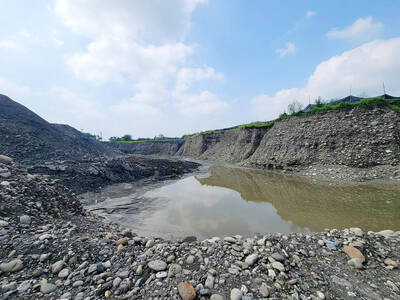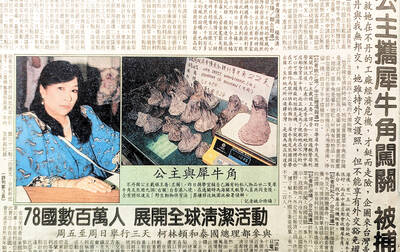Back in the days of no-holds-barred advertising by Madison Avenue’s finest, anything went. Drinking alcohol made you sexy, smoking cigarettes was good for your lungs and every washing powder contained a magic ingredient that made your whites super-white.
And guess what? Those days are back, at least for green advertising. As more and more customers demand environmental responsibility from companies, few large corporations with any sort of public profile now dare to enter the marketplace without a blizzard of sustainability audits and low-carbon-emissions targets. But that being so, the risk of being conned by slick corporate “greenwash” has never been greater, as the volume of complaints to the UK’s Advertising Standards Authority (ASA) testifies.
The green claims coming from corporations can be absurdly general. Nearly everything we buy these days seems to be “sustainably sourced” or “environmentally friendly.” Sometimes, though, they are crazily specific. In the UK, Virgin Trains declares: “Our Pendolino trains emit 76 percent less CO² than cars or domestic flights.” But which cars, which flights, and how full are the trains?
Or plain bonkers. One brand of bottled water says its product contains “300 percent more oxygen.”
In August, the ASA rapped oil company Shell’s knuckles for trying to claim, in an advertisement in the London-based Financial Times, that its US$10 billion investment in sucking tar sands out of the Canadian midwest was a contribution to a sustainable energy future. Tar sands contain bitumen. It takes a great deal of energy to turn them into something you can put in a fuel tank. Overall, the emissions from mining, refining and burning tar sands are between three and 10 times greater than for conventional oil. Shell’s sleight of hand was to use the much-abused word “sustainability” to imply a green agenda when what it was really on about was keeping a sustainable flow of fuel out of its gasoline pumps. The ASA cried foul.
Earlier in the year, the agency also upheld complaints against Renault for branding its Twingo an “eco” car and picturing it with leaves blowing out of its tailpipe, even though its emissions are among the worst for a car of its size.
Advertising, says the ASA, “should always avoid the vague use of terms such as sustainable, green, non-polluting and so on.”
In the real world, we have to admit, things can be nuanced. Lots of corporate claims — about carbon neutrality, for instance — hang on exactly what activities are being audited. Take Manchester airport in northwest England, which was outed in a recent report from the sustainable development organization, Forum for the Future. Last year the airport’s owners pledged to make the airport carbon-neutral, with one small caveat: the target does not include the 200,000-plus flights into and out of the airport each year. As Forum for the Future observed, “this jars somewhat.”
And what are we to make of Fiji Water’s claims to be cutting the carbon footprint of its water by 25 percent and offsetting the rest? “Every drop is green,” it says. But isn’t the whole idea of bottling water on a remote South Pacific island and shipping it to your dinner table just a tiny bit barmy?
Equally questionable are the claims of financial institutions. Back in the days (oh, only a few weeks ago) when the City of London was concerned with something other than day-to-day corporate survival, the City of London Corporation launched a City Climate Pledge, under which finance houses would pledge to “measure and monitor” their carbon footprint. Good for them. Perhaps a few will follow the lead of HSBC, which has developed close links with the environment group WWF and has claimed since 2005 to be the world’s first carbon-neutral bank.
But the pledge looks suspiciously like greenwash. Companies simply have to fill out a form detailing their CO² plans and they can use the pledge logo. “Companies using the logo will be recognized as exemplar sustainable businesses [able to] attract consumers who are becoming more discerning about the credentials of businesses they deal with,” says the flyer. Not bad for just filling out a form. Especially as there doesn’t seem to be any follow-up or auditing process involved.
But as with the efforts of Manchester airport and Fiji Water, there remains a rather large elephant in the living room. The carbon footprint of finance houses is not about whether they offset executive flights or put double-glazing in the boardroom; it is about their investment decisions. The press release put out by the City of London said the pledge would “encourage City organizations to use their global influence to affect the behavior of companies around the UK and the world.” Could the City be about to impose a freeze on cash for tar sands or coal-fired power stations? Not so fast. The pledge itself makes no mention of this.
I would have expected City institutions to be falling over themselves to sign up to the pledge. But 11 months after companies were first asked to sign the pledge, and three months after its public launch, the pledge’s Web site is still promising that a list of signatories “will be available shortly,” and further inquiries revealed that just one company — Deutsche Bank — had so far completed registration. Right now the pledge looks like a one-day PR wonder to green the City’s image, with no substance at all. Or maybe they are all just a little busy right now.
In a bid to root out examples of the fraudulent, mendacious, confusing, ignorant or just daft claims jostling for our attention, we may get to the heart of a dilemma that faces us all. Can we shop our way to sustainability? Are some products so green it is better to buy two of them rather than one? Or are our own consumer lifestyles, suffused in greenwash, the problem? Is there really no alternative to putting away our credit cards, pulling on our thickest jumper and heading for the hills?
And we won’t forget that, even in the corporate world, greenwash is not just a defensive mantra to help maintain business as usual. Some people are out there pushing the environmental agenda with sinister intent. Take, for example, the green rebranding of the traditional rag and bone man.
Last year the EU introduced the charmingly named WEEE directive, which stands for Waste Electrical and Electronic Equipment. The aim is to prevent millions of tonnes of toxic TVs, personal computers, toasters and other electronic goods being dumped into landfill each year. Instead, they have to be recycled. EU residents may not have noticed this because there are no laws stopping them putting that laptop into their garbage. But corporations and retailers are charged with making sure most of the bloc’s electronic waste gets recycled. The question is how.
Some of this stuff is making its way to a handful of hi-tech metals recycling plants in Europe. But most is going to the developing world. Often it has paperwork claiming it will be refurbished and reused, but nobody has the resources to police the system, so in practice much of it ends up in primitive workshops in India and west Africa and China, where it is stripped out, boiled up, dunked in acid or smashed to smithereens by unskilled, low-paid and frequently child labor. I have seen this “recycling” industry at work in Delhi, where barefooted children as young as 8 dunk circuit boards in barrels of acid to remove traces of copper.
Last month, a charity called Computer Aid tried to blow the whistle on this. Computer Aid is one of the few organizations that is genuinely and safely refurbishing and reusing old computers, many of them going to schools in Kenya. It fears this “good” and socially responsible recycling will be undermined by the bad guys. Why is this happening? Partly because factories in India badly want the metals in your old computer. And partly because too many European companies have a no-questions-asked policy towards every broker and cowboy willing to take troublesome waste off their hands. As one industrial supplier told me last year, “A lot of these guys don’t even have addresses, just mobile phone numbers.”
Recycling may be a new term, but the trade is not new. Until the 1960s, recyclers plied the streets of the UK with a horse and cart collecting old stuff that could be sold on. The characters in the television show Steptoe and Son were the archetypes. They have been succeeded by a generation of car-crushers and cable-burners. Nobody called it green then: now they do. But the same wide boys are in charge,.
We are too ready to suspend our critical faculties with anybody claiming to be green. But a great deal of recycling is not quite what it seems. What happens to recycled glass bottles, for instance? As we post them in the recycling bin, we presume they go to make new bottles and cut out the energy cost of making new glass from sand. My local supermarket bin in south London proudly proclaims that recycling one glass bottle “saves enough energy to power a TV for 20 minutes.”
Well, it would if they turned the glass back into new bottles. But it turns out that often they don’t. Much of London’s recycled glass is actually crushed and sold to construction firms as a substitute for sand, or an ingredient in a substitute for asphalt such as Glasphalt — “specially treated so it won’t puncture tires,” as one recycling Web site puts it. That’s a relief, but how many assiduous recyclers trying to do their bit for the environment realize they are actually helping build new roads?
How many more green scams, cons and generous slices of wishful thinking are out there? “Green” has another meaning after all — naive. And we cannot afford that.

The depressing numbers continue to pile up, like casualty lists after a lost battle. This week, after the government announced the 19th straight month of population decline, the Ministry of the Interior said that Taiwan is expected to lose 6.67 million workers in two waves of retirement over the next 15 years. According to the Ministry of Labor (MOL), Taiwan has a workforce of 11.6 million (as of July). The over-15 population was 20.244 million last year. EARLY RETIREMENT Early retirement is going to make these waves a tsunami. According to the Directorate General of Budget Accounting and Statistics (DGBAS), the

Last week the story of the giant illegal crater dug in Kaohsiung’s Meinong District (美濃) emerged into the public consciousness. The site was used for sand and gravel extraction, and then filled with construction waste. Locals referred to it sardonically as the “Meinong Grand Canyon,” according to media reports, because it was 2 hectares in length and 10 meters deep. The land involved included both state-owned and local farm land. Local media said that the site had generated NT$300 million in profits, against fines of a few million and the loss of some excavators. OFFICIAL CORRUPTION? The site had been seized

Sept. 15 to Sept. 21 A Bhutanese princess caught at Taoyuan Airport with 22 rhino horns — worth about NT$31 million today — might have been just another curious front-page story. But the Sept. 17, 1993 incident came at a sensitive moment. Taiwan, dubbed “Die-wan” by the British conservationist group Environmental Investigation Agency (EIA), was under international fire for being a major hub for rhino horn. Just 10 days earlier, US secretary of the interior Bruce Babbitt had recommended sanctions against Taiwan for its “failure to end its participation in rhinoceros horn trade.” Even though Taiwan had restricted imports since 1985 and enacted

Take one very large shark, a boat (we’re gonna need a bigger one of those) and a movie that ran way over budget and you’ve got all the ingredients of a career-making film for one of Hollywood’s most successful directors. Now fans of Jaws — Steven Spielberg’s terrifying thriller about a man-eating shark — can re-live the movie as it celebrates its 50th anniversary in an exhibition at the Academy Museum in Los Angeles. “The film certainly cost me a pound of flesh, but gave me a ton of career,” Spielberg told reporters as he toured exhibits of props and memorabilia